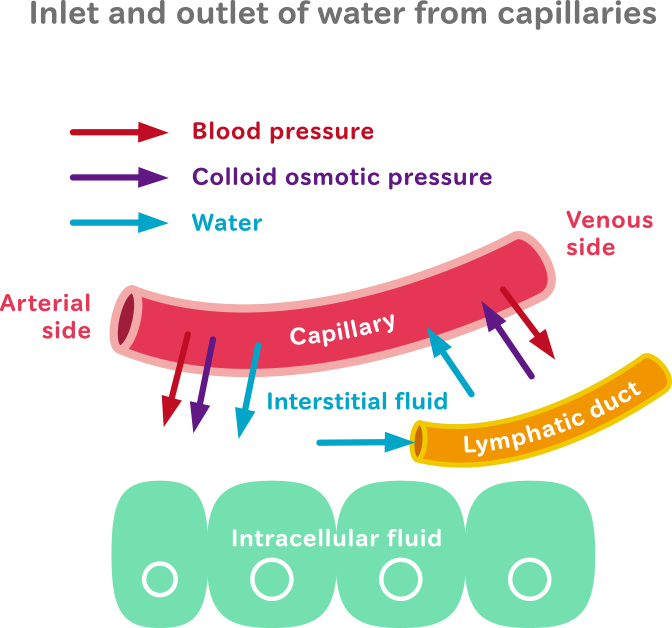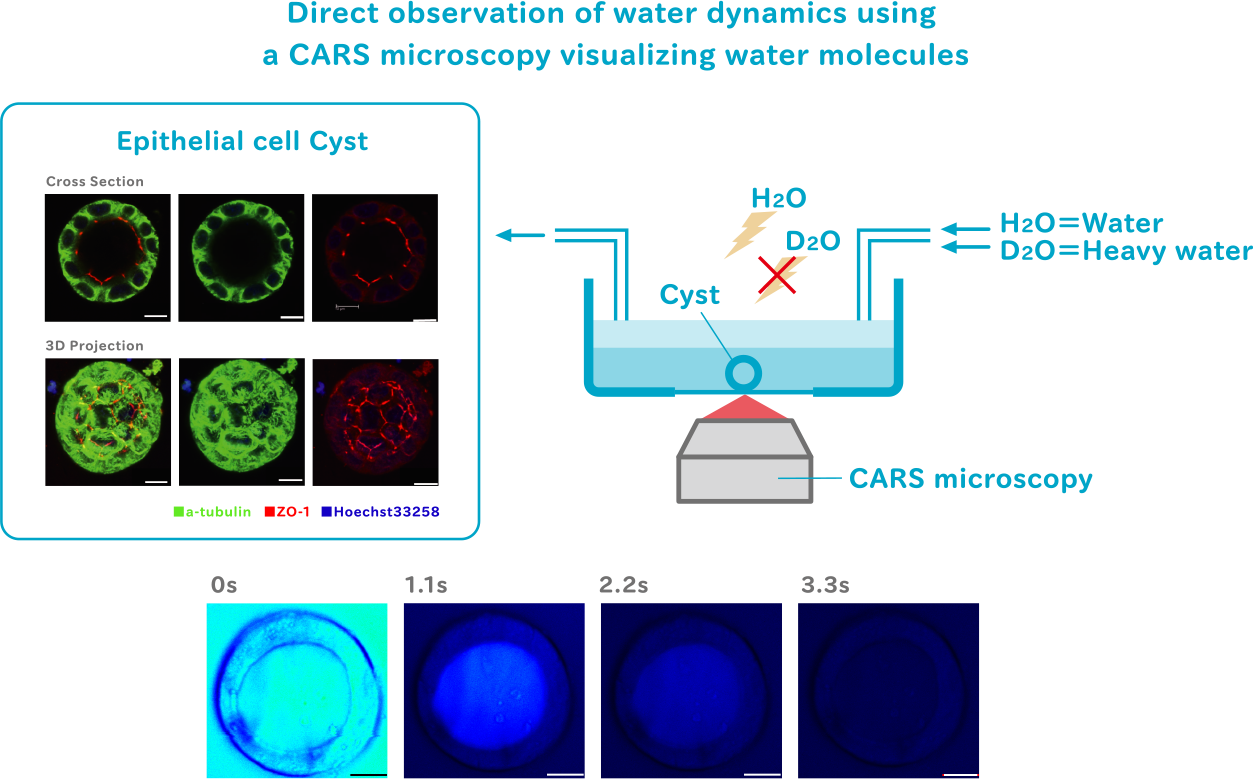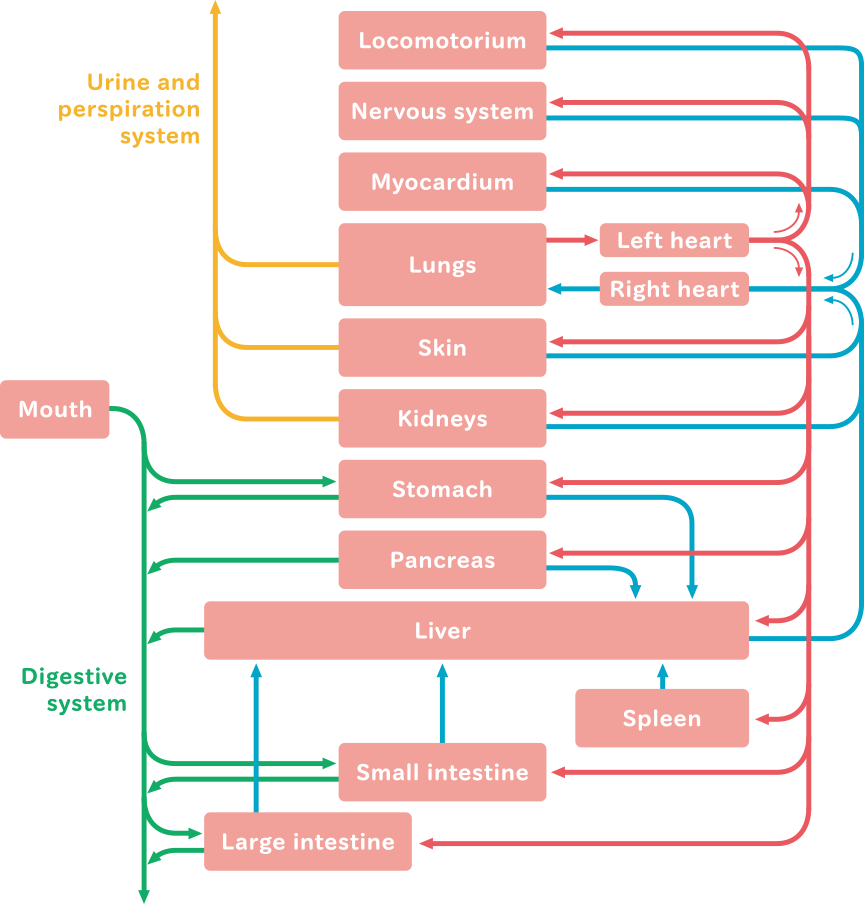
![]()
To propose an appropriate method of fluid intake based on the fluid balance and prediction of kinetic fluid distribution in the human body

We take food and water and excrete them from our bodies as urine and feces every day. So how does the water travel in our body during the period from the intake to the excretion? People know that water presents in blood circulating our boy for nourishing cells, and also in the intracellular fluid in organs. However the details of in vivo water dynamics is not well understood.
In this theme, we aim to develop a new method for a high-precision projection of the detailed water metabolism in human body to propose a better water replenishment plan.
60% of human body is water, 5% is distributed in vessels as a major component of blood, 40% inside the cells, and 15% in interstitial tissues between blood vessels and the organ cells. Techniques for measuring the circulation such as blood flows and pressures have been well established since a long ago and a huge range of findings have been accumulated. However nothing has been known practically about the dynamics of intracellular and interstitial fluids. Furthermore, unlike the movement of water (volumetric flow), no techniques for the observation of water “diffusion” dynamics have been available until recently, which results very poor information about these issues.
This project aims to establish a technique for the direct visualization of water dynamics in human tissues using a coherent anti-strokes Raman scattering (CARS) microscopy, and to achieve a quantitative and comprehensive understandings of the in vivo dynamic water metabolism using a computer simulation model.
Understanding the human dynamic water metabolism should contribute to the disease prevention and human health. Finding a good way of taking water into the body is very important in events, for example, after vigorous exercise or extreme restrictions of drinking during a disaster. In addition, there are a variety of promising applications of this research, from the development of therapies for fatal pathologies such as cerebral edema and laryngeal edema, swelling of the lower limbs and face, and beauty treatments for making a small face.
We will make direct observations of the water diffusion dynamics in various human tissues and organs using the CARS microscopy.
The movement (volumetric flow) of water can be observed using a variety of techniques, but until now there have been no techniques available for making the direct observation of the water ‘diffusion’. We have developed a CARS microscopy with an ultra-short pulse laser resulted by recent leaps of the laser engineering, which allows us direct observation of the water diffusion based on differences in the molecular vibrational frequencies of water (H2O) and heavy water (D2O).

We intend to use the CARS microscopy to directly observe a variety of living tissues, especially isolated pancreatic ducts and mesentery capillary plexus in this program.
We aim to obtain a quantitative and integrated understanding of dynamic and non-equilibrium water dynamics in the human body using a computer simulation.
All life on earth, including humans, lives with intake of water from the environment, metabolic processes (circulation and distribution), and excretion (secretion) of wastes. Human fluid intake and excretion has long been general knowledge of a textbook level. However, these data were obtained under restricted conditions and just provide approximated values in day order for the water metabolism. Nothing has been known about inevitable dynamic and non-equilibrium water metabolism in a fast, minutes or seconds, order.

We aim to create a computer simulation model of dynamic and non-equilibrium water dynamics in the human body based on reported data and data newly obtained via experiments using the CARS microscope and the like.



